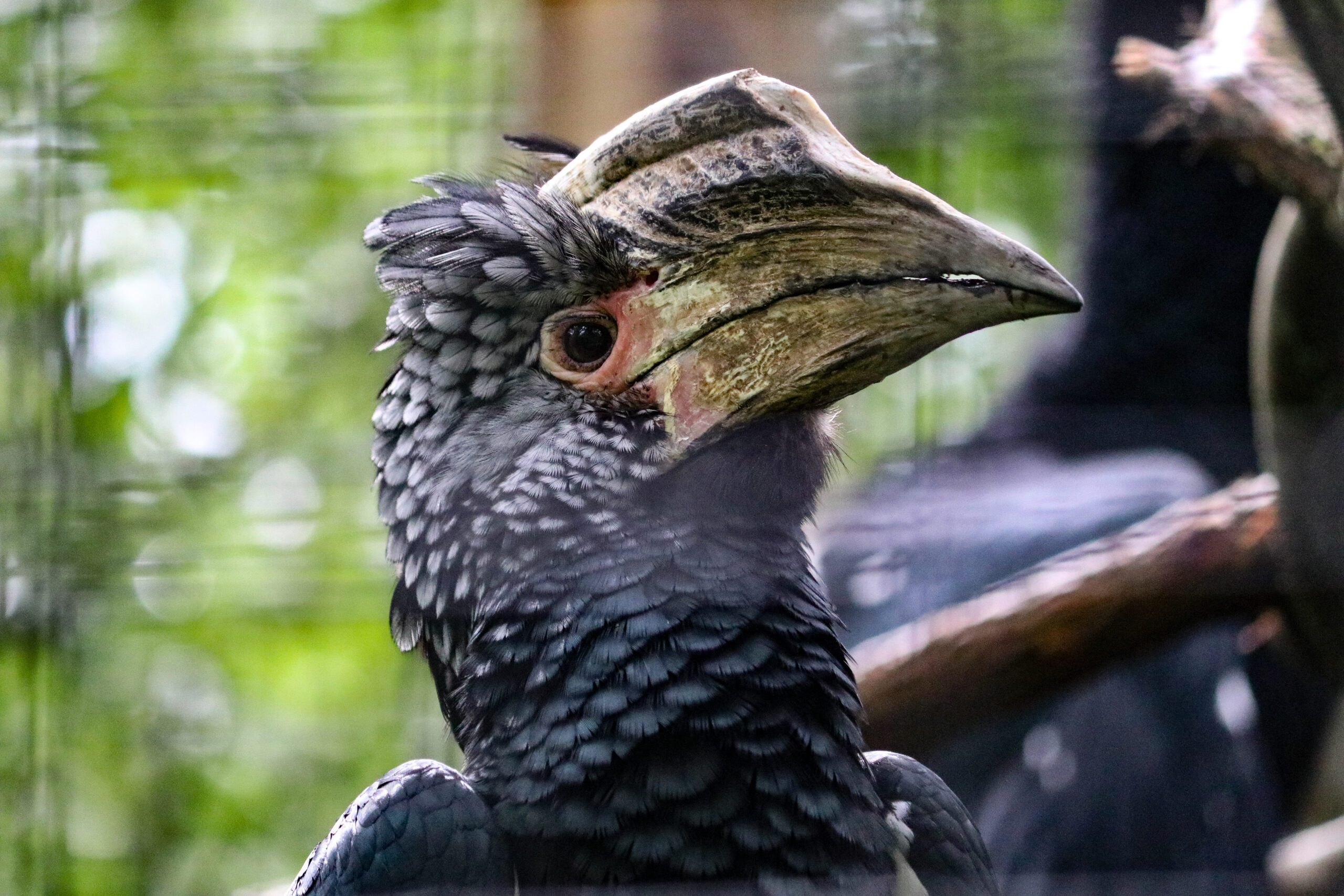I LIVE IN AFRICA
The silvery-cheeked hornbill lives in the evergreen forests of eastern Africa, ranging from Ethiopia to South Africa.
I AM AN OMNIVORE
While the silvery-cheeked hornbill primarily eats a diet of fruits, they will occasionally eat insects, eggs, and small reptiles and birds when presented with the opportunity.
SILVERY-CHEEKED HORNBILLS ARE SOCIAL
The silvery-cheeked hornbill will often roost in pairs or in family groups. However, juvenile silvery cheeked hornbills can form separate flocks of anywhere between 100-200 individuals.
PUT IT ON THEIR BILL
These birds are mostly black except for a wide white stripe on the lower back. They also have a silvery-grey colored head and a large, hollow, hornlike beak, both of which lend the birds their name. The beak’s edges are serrated so that the bird can tightly grasp its food.
HELPING THE SILVERY-CHEEKED HORNBILL IN THE WILD
The Fort Wayne Children’s Zoo provides financial support to the Hornbill Research Foundation, which is used to train locals to collect data on hornbills, in order to secure their populations for the future.
I AM IMPORTANT TO MY ECOSYSTEM
Because this bird’s diet consists mainly of fruit, the silvery-cheeked hornbill plays a very important role in seed dispersal in their ecosystem.

